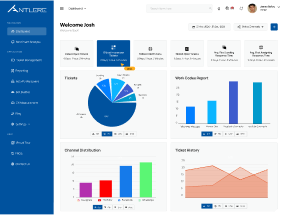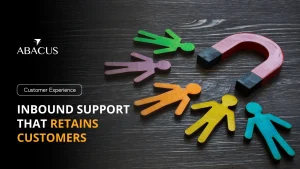Call Center Management Best Practices: Q&A Guide to Efficiency
Call center management is a critical component in attaining operational excellence and shaping the customer experience. In a fast-paced business environment, an effective management strategy rescues operations by streamlining processes and optimizing resource allocation to meet evolving customer expectations. By embracing these best practices, companies create a call centre environment that exceeds expectations, driving greater loyalty and business success.
What are the core focus areas for transforming call center operations?
To optimally transform management, centers must focus on a comprehensive set of initiatives:
- Service Quality: Improving the caliber of every interaction.
- Process Streamlining: Removing bottlenecks to manage high quantities of client interactions.
- Agent Performance: Improving output through fostering a culture of continual growth and implementing advanced tech.
What are the best practices for achieving customer service excellence?
Achieving excellence requires a mix of consistent mentoring and data-driven metrics. Call centers use Quality Assurance (QA) to verify service standards, which directly influences customer satisfaction (CSAT) and loyalty.
Which key performance metrics are most important for call center management?
- Net Promoter Score (NPS): Measures customer loyalty to identify service gaps and encourage proactive problem solving.
- Customer Satisfaction Index (CSI): Monitors satisfaction trends to improve first-contact resolution rates and operational efficiency.
- Customer Effort Score (CES): Aims to lower customer effort by simplifying procedures and handling times to increase agent efficiency.
How can call centers enhance operational efficiency and cost management?
Operational efficiency is enhanced through project management strategies and collaboration across roles—including agents, supervisors, and the call center manager. Delegating activities reduces wait times and operational hurdles, while smart budgeting and vendor negotiations ensure effective cost management.
What strategies help align expenses with performance objectives?
- Resource Optimization: Focusing agents on high-value contacts for faster, more accurate replies.
- Cloud-Based Systems: Investing in cost-effective staffing and training solutions.
- Proper Resource Allocation: Ensuring call centres operate within budgetary limits for sustainability and scalability.

Why is a Quality Assurance (QA) system vital for call center quality management?
A robust quality assurance (QA) system is essential for maintaining service expectations and aligning agent performance with organizational goals. It creates a systematic feedback loop focusing on behavior, resolution effectiveness, and adherence to special categories.
How does trend analysis improve quality monitoring?
Trend analysis uncovers recurring issues and potential process enhancements. Through constant call evaluations and comprehensive reports, the contact center can improve call center quality management while maintaining high efficiency and providing valuable insights into areas needing improvement.
How do data-driven insights and communication channels elevate performance?
Using analytics platforms and Customer Relationship Management (CRM) tools allows a call center manager to spot patterns and habits. This data-driven strategy elevates productivity and informs decisions regarding resource allocation and staffing.
How does an omnichannel approach improve customer interaction?
Maintaining multiple channels—including phone, email, live chat, social media, SMS, and video calls—adapts to client preferences. Efficiency is further boosted by:
- Advanced Routing: Optimizing inbound communication.
- Proactive Engagement: Using outbound communication for better engagement.
- Platform Integration: Providing a smooth omnichannel experience to lower handling times.
What role does Workforce Management (WFM) play in call center efficiency?
A complete Workforce Management (WFM) solution is necessary for overseeing real-time tasks, scheduling, and payroll. Using advanced forecasting tools, call centers match the number of agents to anticipated call volume, preventing understaffing during peak times.
How does WFM help maintain profitability?
Effective WFM cuts costs and minimizes idle time. By ensuring the right number of operators are available, centers meet customer expectations while maintaining high service standards and overall quality.
What industry tools and IT advancements are essential for modern call centers?
Modern centers must integrate advanced technology to automate repetitive processes and analyze customer sentiment. Key tools include:
- Speech Analysis & Audio Transcription: For analyzing keywords and sentiment during conversations.
- Advanced IVR Systems: Providing self-service alternatives for common queries.
- Automatic Call Distribution (ACD): Improving call routing and automating outbound calls.
- AI-Powered Chatbots: Providing 24-hour care and cutting operating costs.
- CRM Integration: Securing customer data for personalized interactions.
How can centers ensure continuous improvement and change management?
A systematic approach to change management ensures new strategies comply with quality standards. This involves monitoring the impact on compliance and agent performance while engaging stakeholders (supervisors and agents) in decision-making to define new expectations.
How is the “People” element managed for higher efficacy?
- Reward and Recognition: Using performance incentives and “employee of the month” programs.
- Development and Learning: Customized programs for soft and technical skills.
- Upskilling and Promotion: Creating clear career routes.
- Benefits and Compensation: Providing competitive packages to ensure employees feel appreciated.

Why are transparency and “Promise Realization” critical in partnership liaisons?
Transparency builds client trust and operational efficiency. By providing a complete process map and sharing performance indicators publicly, call centers foster a culture of responsibility. Promise realization involves meticulously measuring compliance with service level agreements (SLAs) and resolution objectives.
How do success stories and OKRs build credibility?
Displaying case studies and customer testimonials provides tangible proof of success. Integrating Objectives and Key Results (OKRs) into client interactions demonstrates a strategic capacity to generate results and accomplish client objectives, cultivating long-term relationships.
What is the difference between a Company-Owned Hub and a Partner-Managed Contact Center?
A company-owned customer hub is an in-house operation, while a partner-managed contact center involves outsourcing to specialist suppliers. Understanding the distinction is critical for establishing effective management strategies and producing optimum outcomes.
What are the benefits of Partner-Managed Call Center practices?
Partner-managed contact centers allow organizations to harness external knowledge, scalability, and cutting-edge technology.
- Cost Savings: Lowering manpower and infrastructure expenses through strategic outsourcing.
- Scalability and Flexibility: Altering call center operations based on market demand and volume variations.
- Access to Expertise: Utilizing providers with industry-specific experience to handle large quantities of contacts.
How can businesses mitigate the challenges of outsourcing?
The primary challenges of outsourcing—loss of control, data security, and brand alignment—can be managed through strict best practices:
- Service Level Agreements (SLAs): Establishing clear performance agreements and communication channels.
- Data Security Compliance: Selecting partners with proven track records in GDPR, HIPAA, and regular security audits.
- Cultural Alignment: Investing in training for external agents to ensure they accurately portray the company’s brand and values.

Conclusion: How to master call center management for long-term success?
Mastering call center management requires a blend of sophisticated technology integration, efficient staff management, and continuous development. By focusing on operational excellence and strategic alignment, organizations can optimize resource allocation and stay competitive in an evolving customer service environment.
Ready to improve your customer service operations? Discover how Abacus Outsourcing can change your contact center or Business Process Outsourcing with customized solutions that increase efficiency and performance. Contact us now to learn more.









